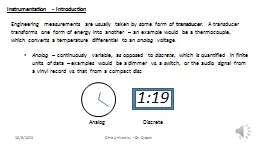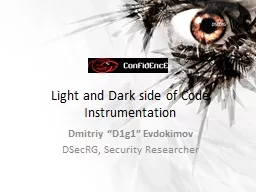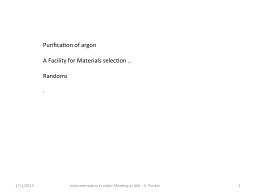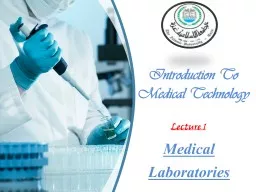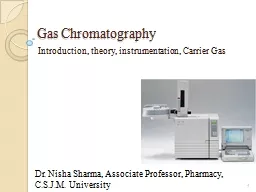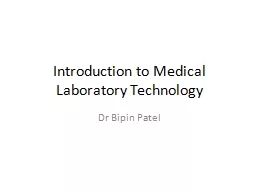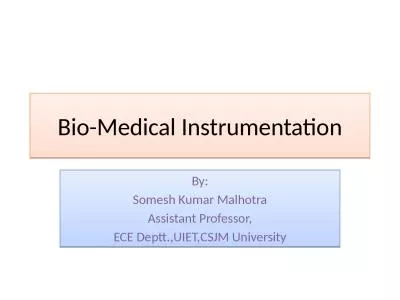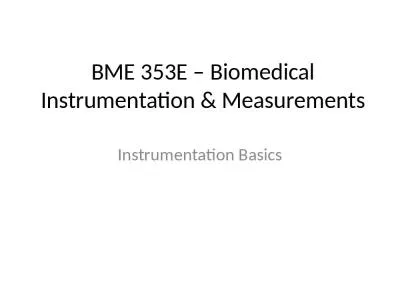PPT-Medical Laboratory Instrumentation
Author : natalia-silvester | Published Date : 2016-02-28
20102011 Third Year Dr Fadhl Alakwa wwwFadhlalakwaweeblycom USTYemen Biomedical Department Light Transmission Dependence on Concentration Beers Law The BeerBouguerLambert
Presentation Embed Code
Download Presentation
Download Presentation The PPT/PDF document "Medical Laboratory Instrumentation" is the property of its rightful owner. Permission is granted to download and print the materials on this website for personal, non-commercial use only, and to display it on your personal computer provided you do not modify the materials and that you retain all copyright notices contained in the materials. By downloading content from our website, you accept the terms of this agreement.
Medical Laboratory Instrumentation: Transcript
Download Rules Of Document
"Medical Laboratory Instrumentation"The content belongs to its owner. You may download and print it for personal use, without modification, and keep all copyright notices. By downloading, you agree to these terms.
Related Documents



